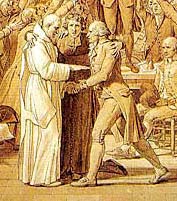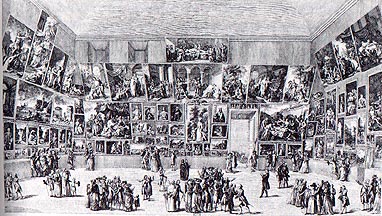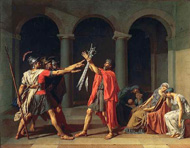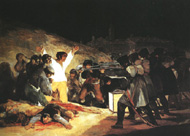
|

|
| Watteau, Pilgrimage to Cythera, 1717. |
Jacques Louis David (1748-1825), Oath of
the Horatii, 1784-85. (Ads: Boys / Girls ) |

|
|
| Poussin, Holy Family on the Steps, 1648. |
|

|
|
| David, Death of Socrates, 1787. |

|
| |
Raphael, School of Athens, 1510-11. |

David, The Tennis Court Oath, 20th June, 1789, drawing done in 1791.
|

Arringatore (Aulus Metellus), Roman Republican bronze portrait,1st c. B.C.
|

Roman Marriage Ceremony, 17th century engraving after Roman sarcophagus.
|
|
|

|

|
| David, Death of Marat, 1793. |
Michelangelo, Pieta, 1498-1500. |
|

|
| Delaroche, Napoleon Crossing the St. Bernard Pass. 1848. |
David, Napoleon Crossing the St. Bernard
Pass, 1800-01. |

|

|
| Francisco Goya (1746-1828), The Third of
May, 1808, painted in 1814. |
Goya, The Sleep of Reason Produces Monsters,
1796-98, etching. |
| |

|
| |
David, Oath of the Horatii, 1784-85. |
|
  
|
| |
Details of the Third of May. |
| |

|

|
Goya, Christ in the Garden of Olives, 1819. |
| Goya, Saturn Devouring his Sons. |
|




















